Bear hunting with dogs brings a whole range of emotions to mind.
More specifically, the pretty controversial bear hounding.
However, there’s also another variant of bear hunting (which could actually be beneficial to wildlife).
But first, let’s explore bear hounding and why it often damages wildlife populations.
Some people disguise hounding as a service to society while others deem it a sick sport.
Even hunting advocates seem to turn their back on bear hounding because it’s not only unfair but damaging to wildlife1 and possibly their own dogs.
- Bear hounding often orphans cubs
- Being chased into trees incites incredible anxiety in the animals
- Hounds are often hurt during encounters
- Non-target animals are chased since controlling dogs over large distances is impossible
- Hunters often trespass on private property, target endangered species, or chase bears onto busy roads
Why are bear cubs orphaned?
Because hunters don’t care to check or misidentify the gender.
Sometimes, they eliminate the threat on sight when encounters with their dogs ensue.
Other times, bears are chased over miles and robbed of their energy2 which may seal their fate, just for the hunters to notice the bear is off-limits due to age or gender.
But as mentioned, bear hounding is not the only way to hunt bears with dogs.
Below, I’ve listed all the breeds suitable for bear hunting.
A lot of breeds mentioned in other articles are absolutely not suitable for hunting bears in any way, shape, or form.
What Are Bear Hunting Dog Breeds Used For?
Hounding doesn’t necessarily only serve as a sport, instead bear hunting dogs are also used in some areas to control rising bear populations, but modern non-lethal methods include Karelian Bear Dogs to scare bears away.
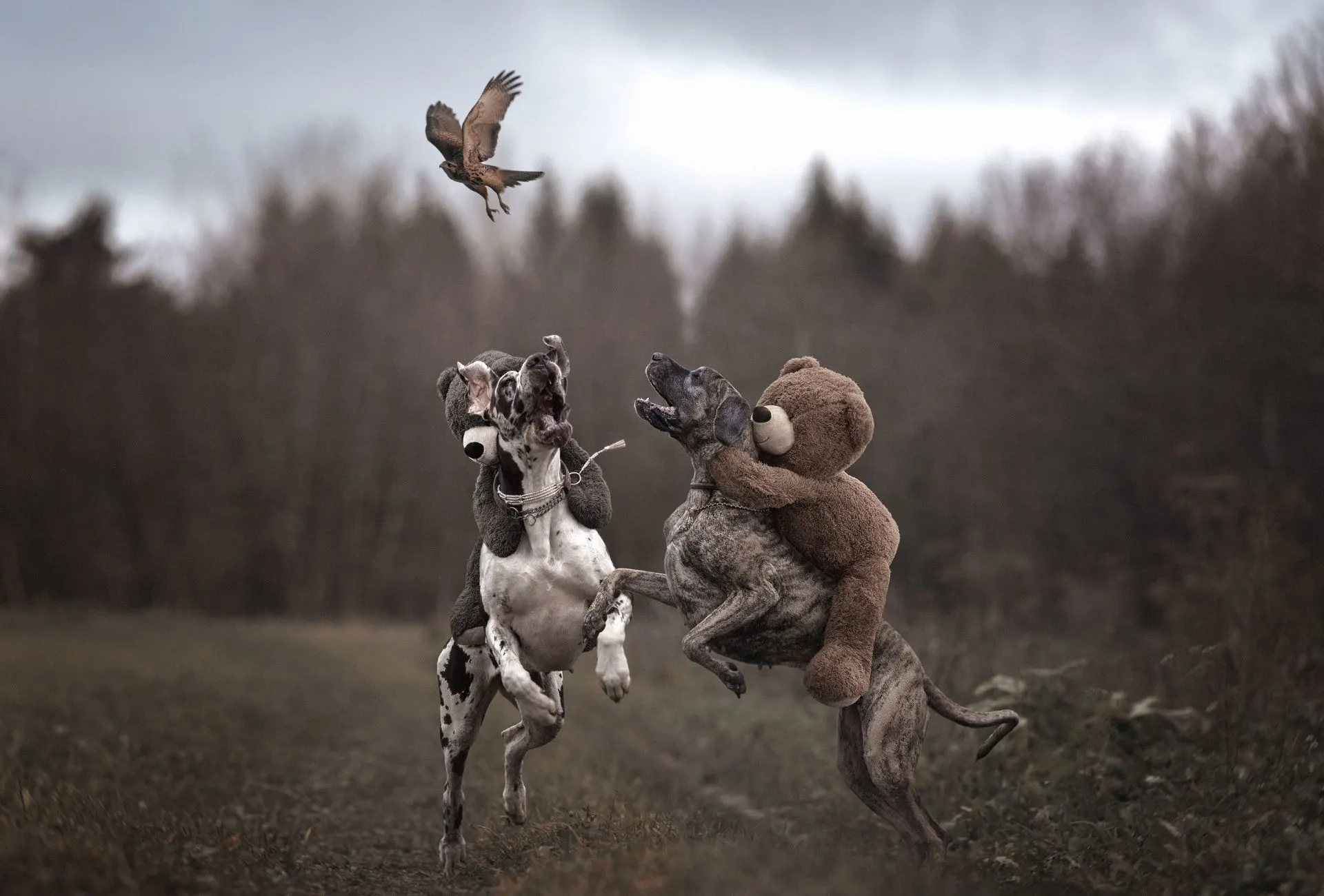
As the polar ice melts, the number of bears roaming northern rural regions in Russia increases3.
Naturally, this creates a conflict between the inhabitants of small towns and these massive (and endangered) Polar Bears.
All parties involved will hopefully seek out a peaceful solution instead of allowing bear hunting with dogs, especially considering that it’s us humans who are destroying their natural habitat.
North America might soon face a similar problem and wildlife and law enforcement are seeking solutions.
Until now, bears who’ve gotten too used to people are either euthanized or put far away into another territory, both far from optimal solutions.
Hounding is partly allowed to serve as “population control” but all these (partly inhumane tactics) could be replaced by an altogether different method.
Organizations such as the Wind River Bear Institute created an actionable plan that includes dogs – but in a non-lethal way.
Dogs such as the Karelian Bear Dogs4 are used to scare bears away in the following steps:
- Bears who get too close and/or too used to humans are identified
- Bear hunting dogs are brought in to scare them (resembling Coyotes out and about to steal bear cubs)
- Upon release, the dogs track the bear, bark, and nip at the bear’s heels until called back
- If the bear has gotten used to a specific spot, they trap the animal and bring in the dogs to scare them and then release
- Additional methods like firing rubber bullets can be utilized
Sadly, there’s not a lot of literature out there discussing this way of controlling bears.
Instead, most (outdated) research papers focus on traditional bear hounding and its efficacy.
Even though there aren’t a lot of resources, I’ve tried my best and compiled a list of breeds that were traditionally used and could be introduced in this more modern way below.
Any dog breed successfully working bears offers a huge upside to the old ways:
- No known injuries to the dogs
- Bears are not unnecessarily eliminated
- No compromise in safety around campgrounds and National Parks for humans
- Karelian Bears Dogs have been able to find evidence of poaching and save polar bear dens near oil or gas fields
However, not all areas (think residential) are suitable for this type of bear control.
Besides the labor to raise and train these dogs, controlling bears this way is more labor-intensive.
So now you know about hounding as well as non-lethal bear hunting with dogs, but which breeds are actually suitable?
9 Bear Hunting Dog Breeds
The best bear hunting dog breeds include the Karelian Bear Dog, Plotthound, Coonhound, Foxhound, as well as large game hunters such as the Dogo Argentino or Rhodesian Ridgeback.
Here’s the full list of dogs capable of hunting large game such as bears:
- Karelian Bear Dog
- Plotthound
- Coonhound
- American Foxhound
- Bloodhound
- German Shorthaired Pointer
- German Wirehaired Pointer
- Dogo Argentino
- Rhodesian Ridgeback
Karelian Bear Dog
Among the top spots for dog breeds used to work bear is the Finnish black-and-white Karelian Bear Dog.
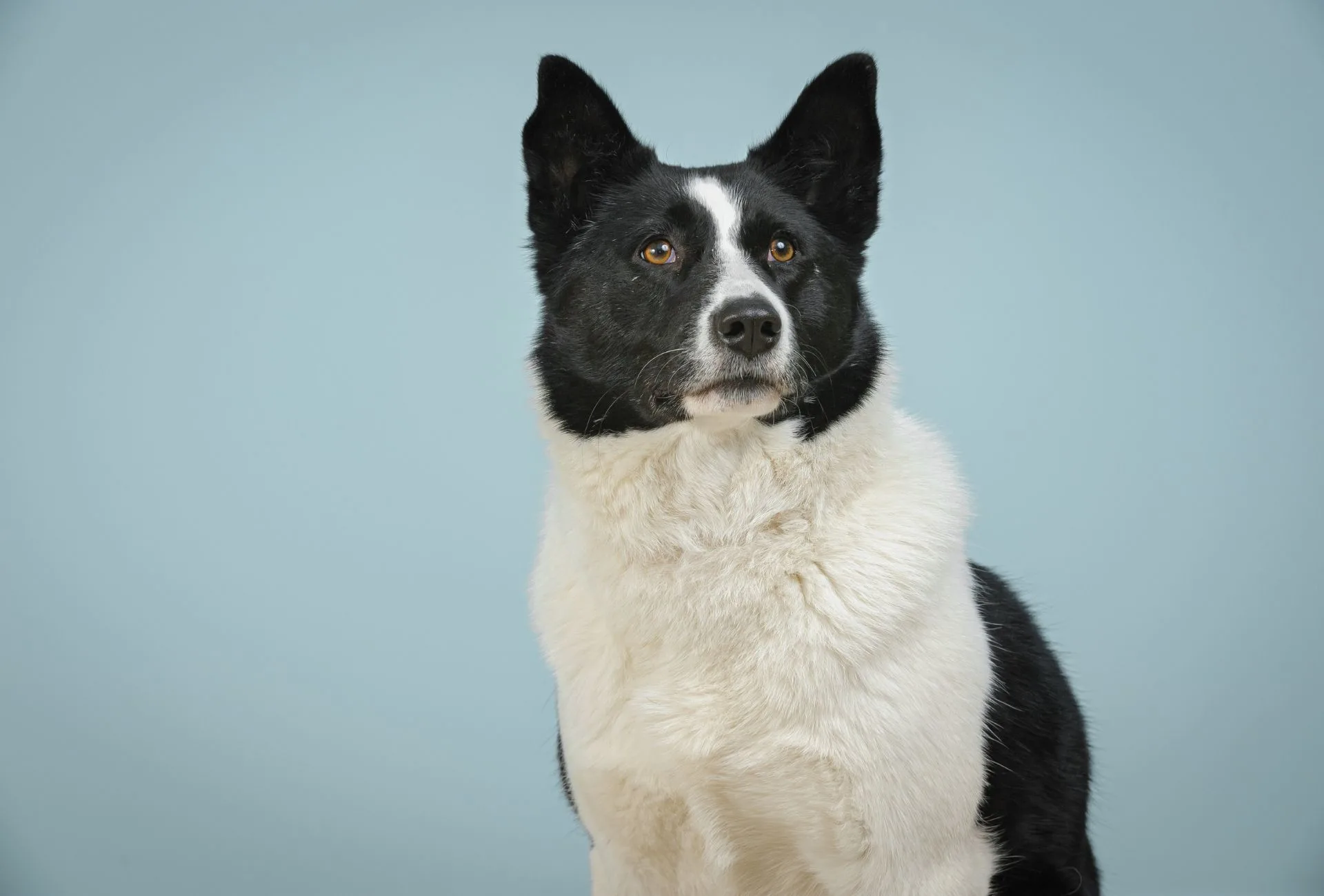
Early breed ambassadors have been recorded in other colors as well such as red-gray or pure red.
However, black-and-white emerged as the desired color since the breed standard was formulated in 1945.
The Karelian Bear Dog looks like a cross between Border Collie and Husky with some resemblance to breeds like the Samoyed or a more wolfish German Shepherd.
While working bear is their field of expertise, they can also compete in search and rescue or sled dog trials due to their sturdy double coat and endurance.
Plott Hound
Technically also among the Coonhounds, the Plott Hound has a different ancestor though.
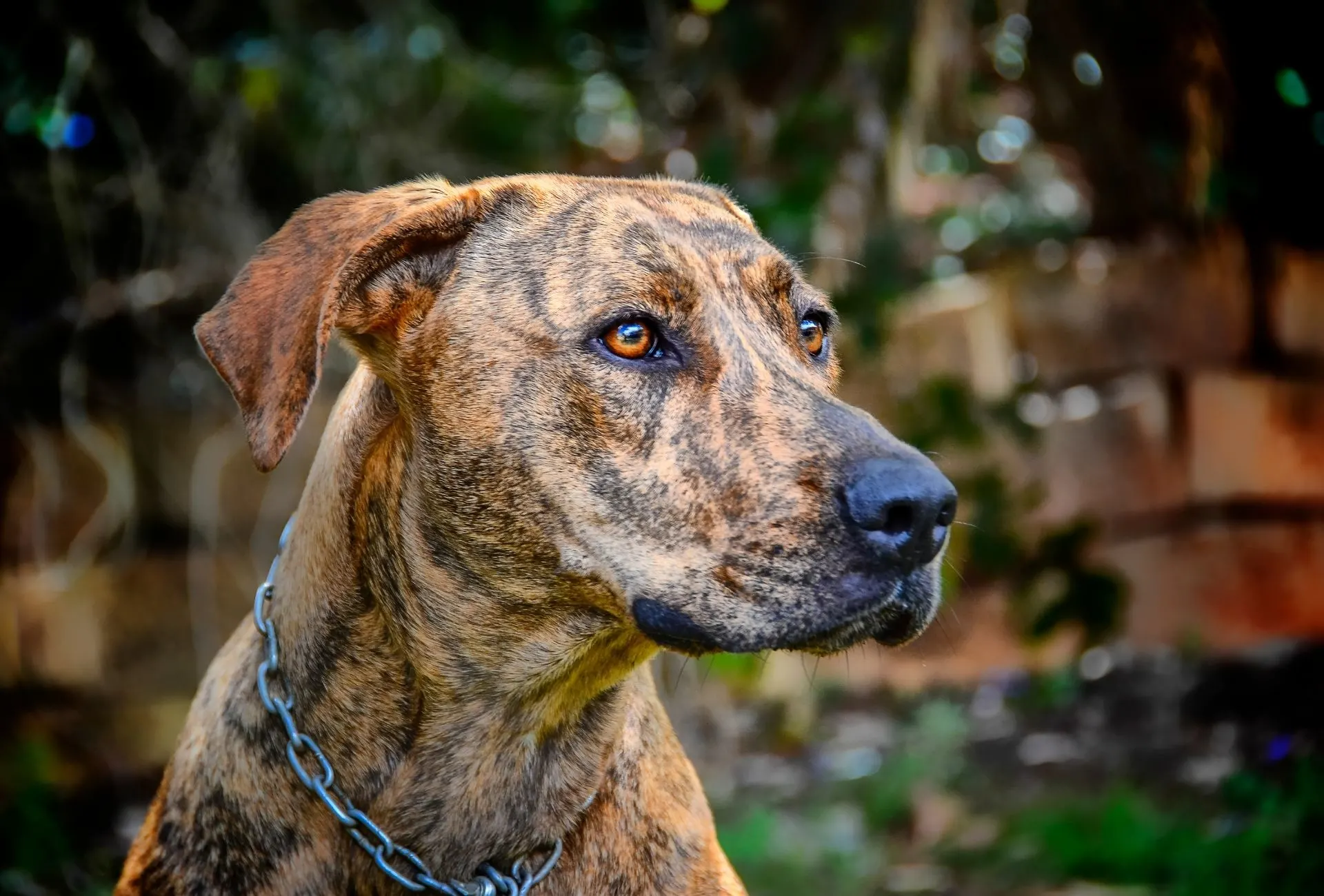
Plott Hounds don’t descend from English Foxhounds but rather from “Hanover hounds” in Germany.
The German immigrant who brought these dogs to the US frequently hunted bears in the mountains with his dogs.
Coonhound
There are various types of Coonhounds such as the Redbone, Bluetick, Black and Tan, American English, and Treeing Walker Coonhound.
Treeing Walker Coonhounds are among the most loving of the Hounds and quite sensible hunters too.
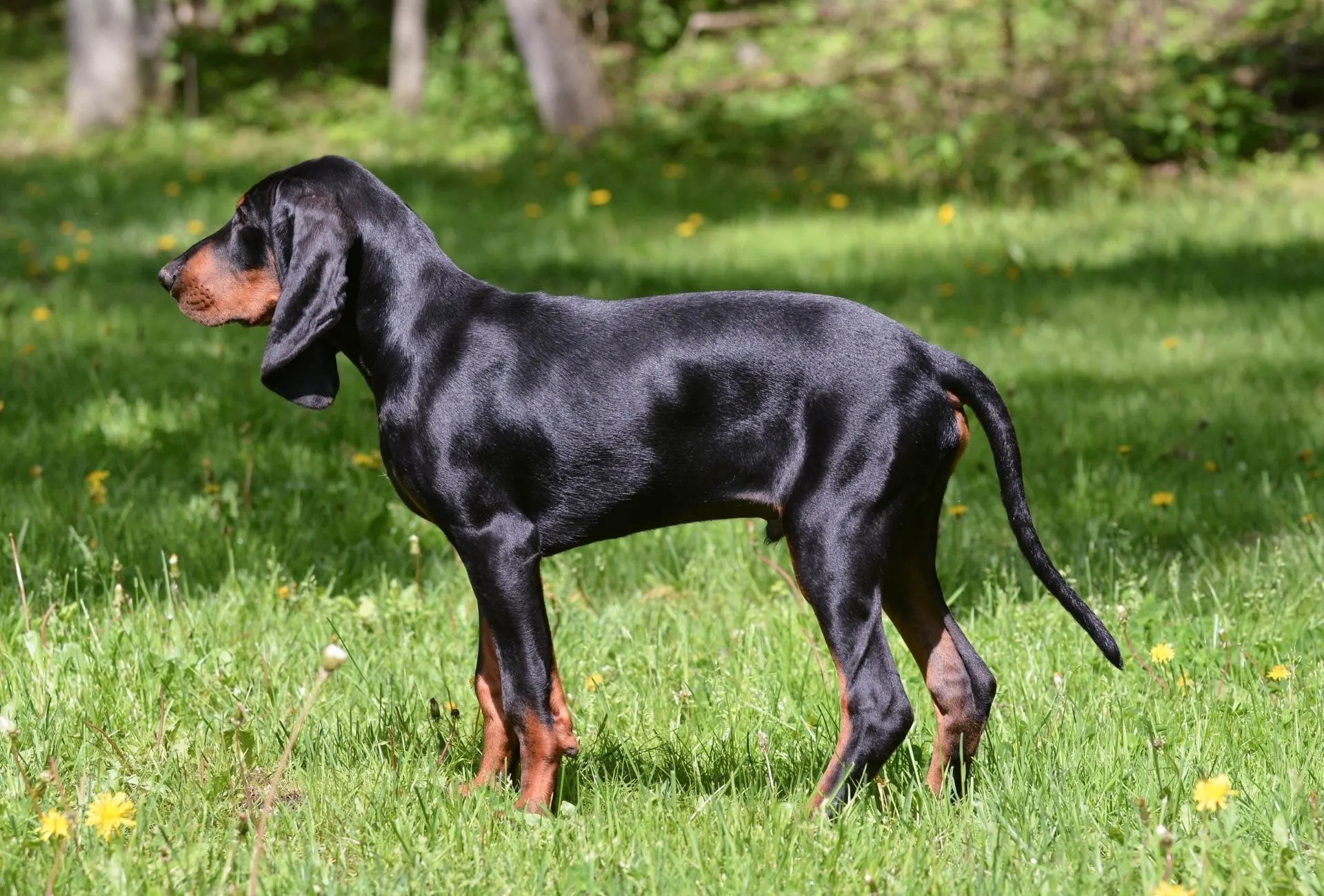
Ever wondered where the word “treeing” comes from?
It’s because this Hound is known to trail smaller game until it climbs a tree with the dog waiting below and barking to signal the location to the hunter.
Walker comes from the breed’s creator.
This breed is also commonly used for traditional bear hunting where the dogs hunt outside the hunter’s control and often camp for quite a long time at the bottom of the tree.
American Foxhound
The American Foxhound’s robust yet sleek frame is complimented by their soft eyes.
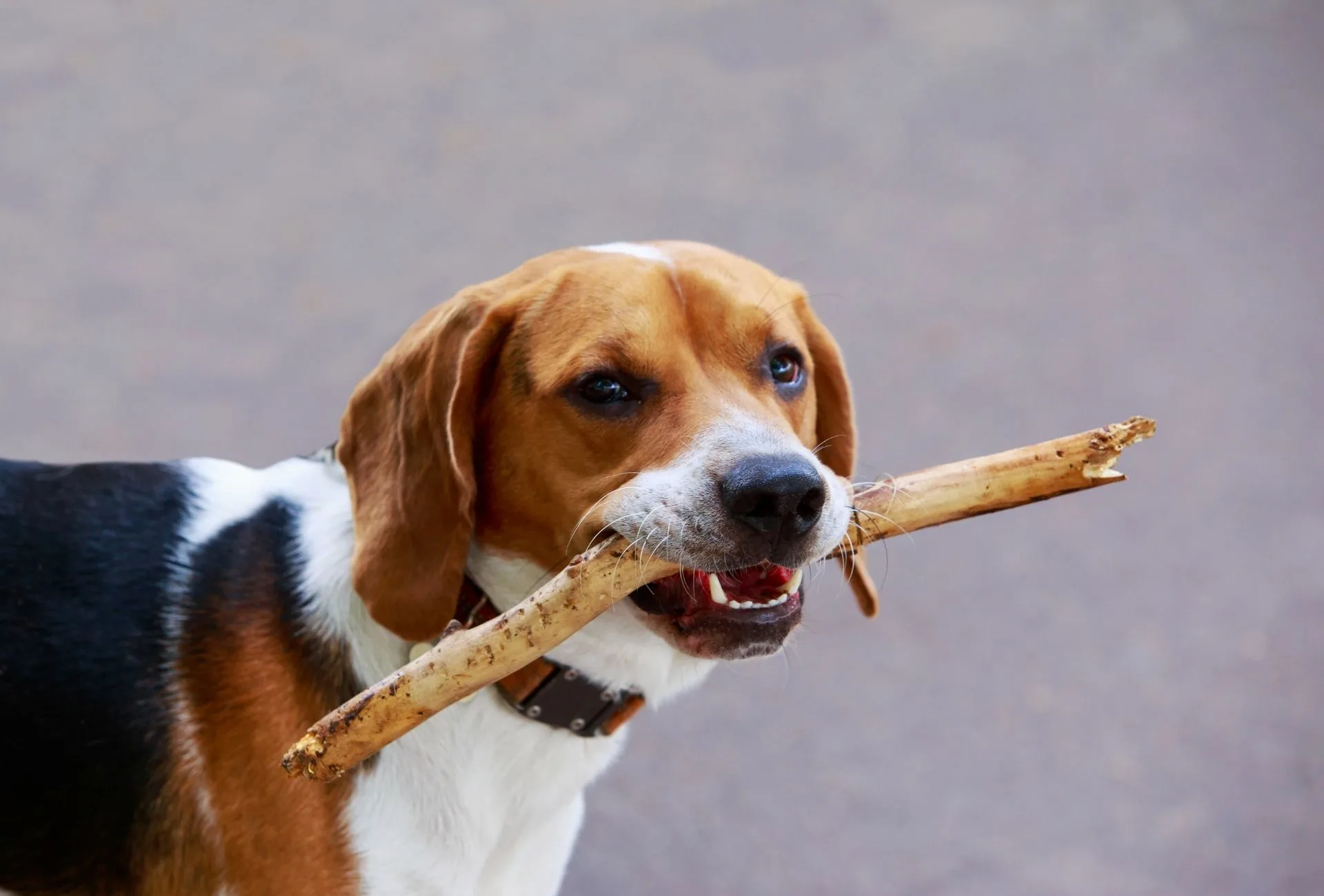
The bark that makes bear hunters love the American Foxhound could prove detrimental to your neighbor’s ears.
So before considering one, beware of their fierce barking which can only be controlled through training and exercise to some degree.
Bloodhound
Bloodhounds are known to be among the dogs with the best sense of smell out there (that and their incredibly long ears).
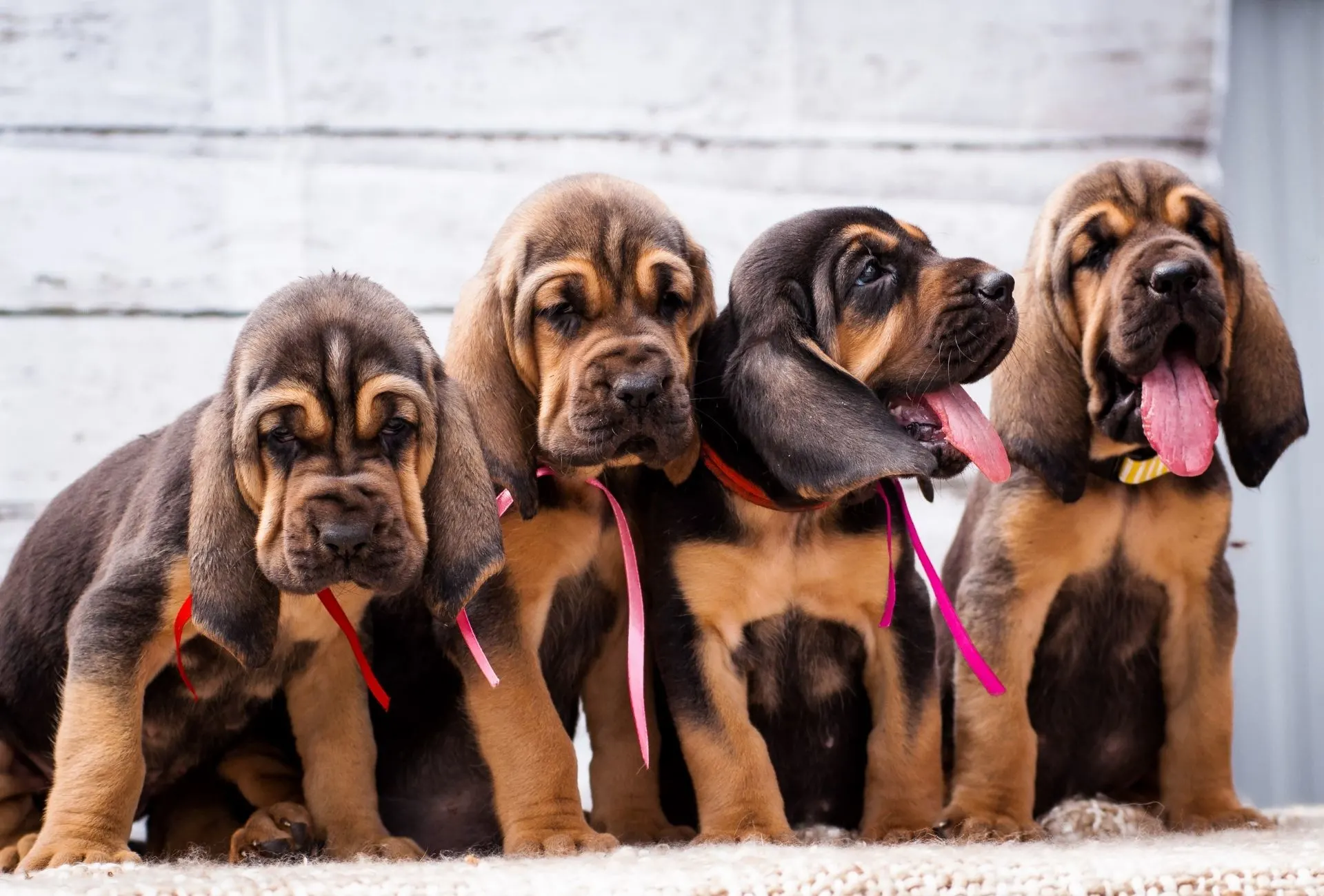
Did you know that the sloppy ears are actually there to block out sound when they’re following trails?
German Shorthaired Pointer
The German Shorthaired Pointer is a versatile hunting dog.
While Pointers are usually trained to point at birds, they can theoretically be used for pursuing and barking at bears too.
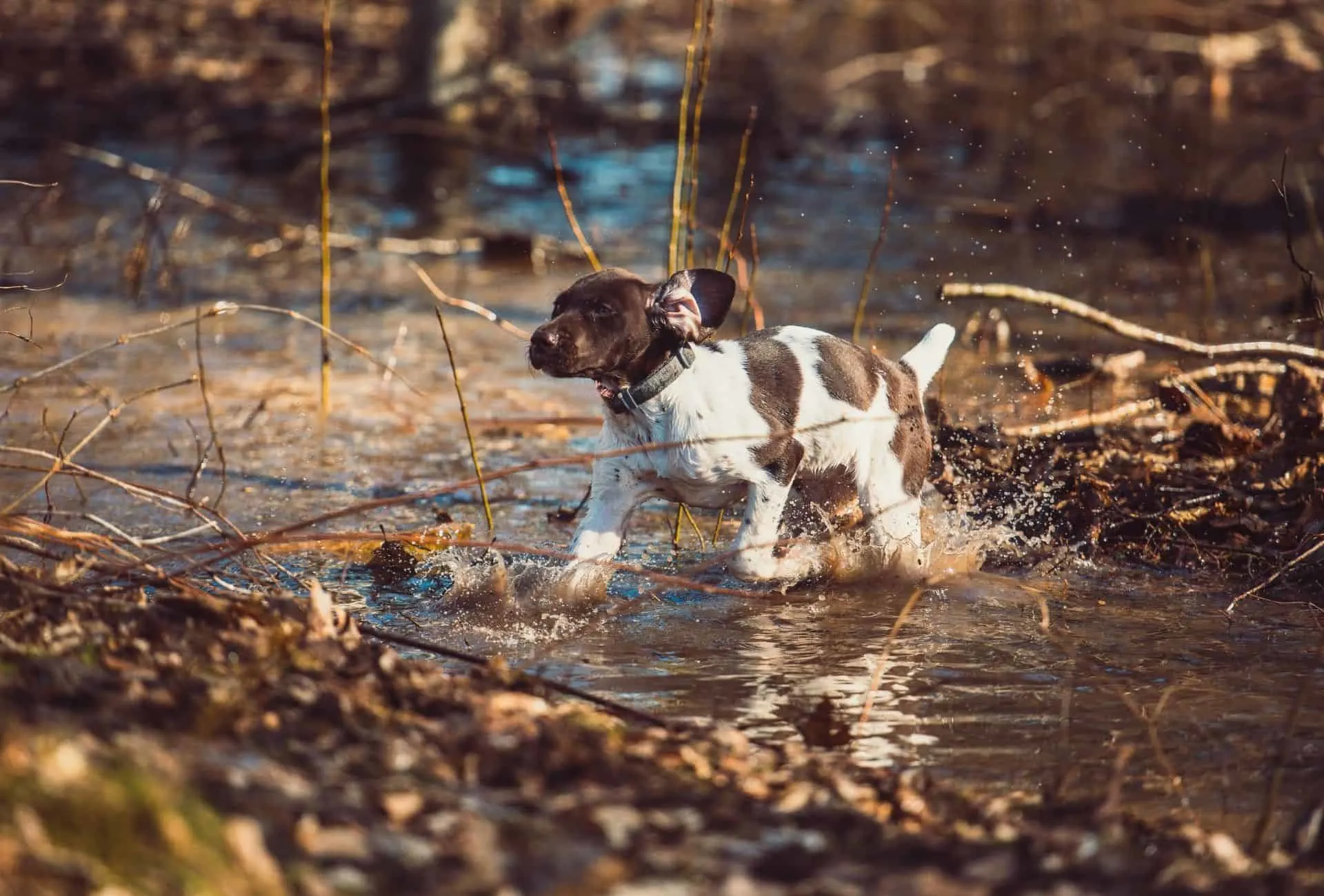
German Wirehaired Pointer
German Wirehaired Pointers could be a good fit for hunting bears.
The German Wirehaired Pointer may sound and look similar to the GSP but they’re different breeds.
While their wiry coat places first on the GWPs identifiable traits, their very loving and quite independent character is a close second.
Make sure you have plenty of time and commitment to research since this is a very active breed.
Dogo Argentino
The Dogo Argentino is the first dog of the Mastiff type on this list (there are actually 22 Mastiffs in total).
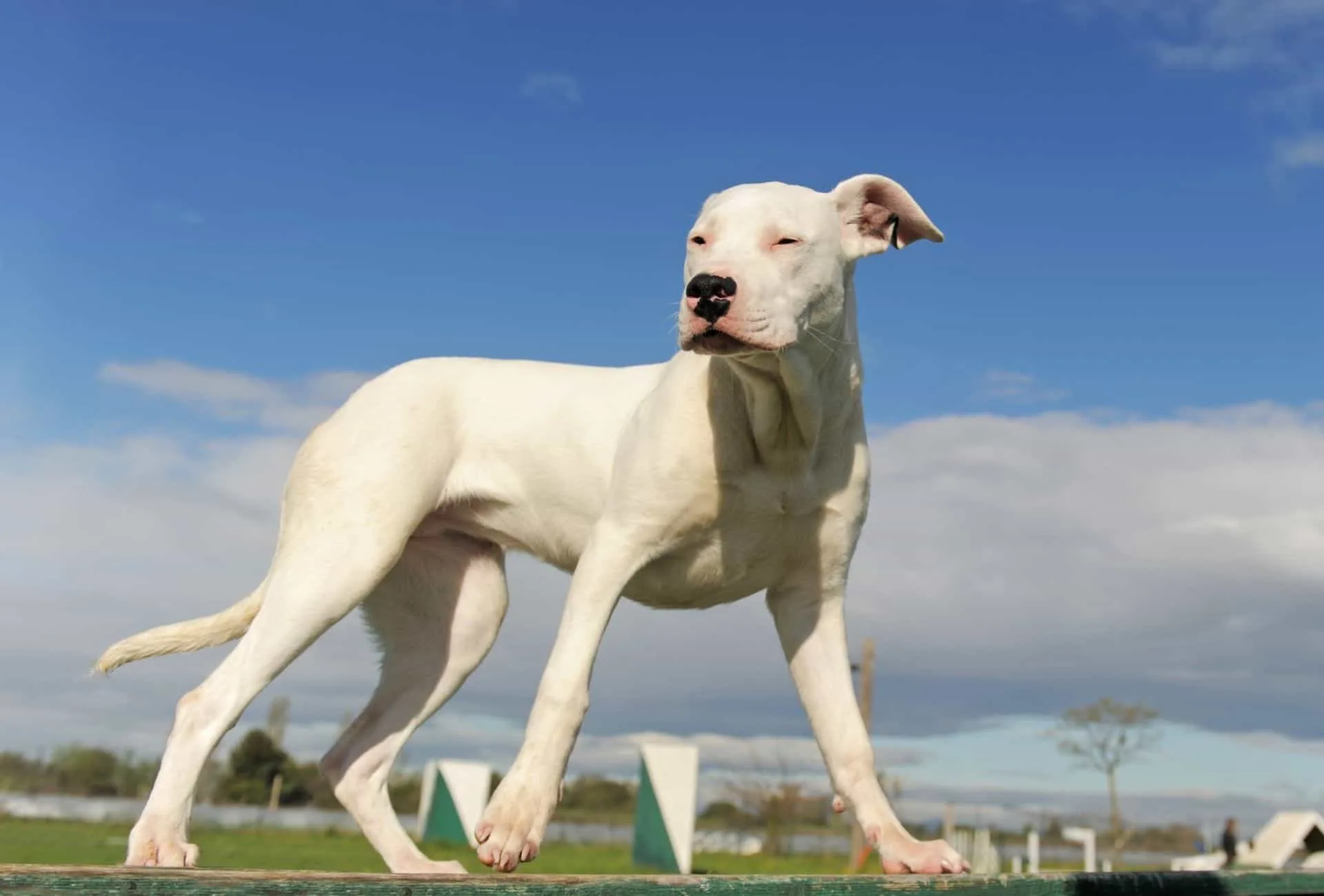
Rhodesian Ridgeback
Rhodesian Ridgebacks are actually hunting lions in packs in their home country.
Contrary to popular belief, Ridgebacks don’t actually fight the lions, but they’re good at baying them.
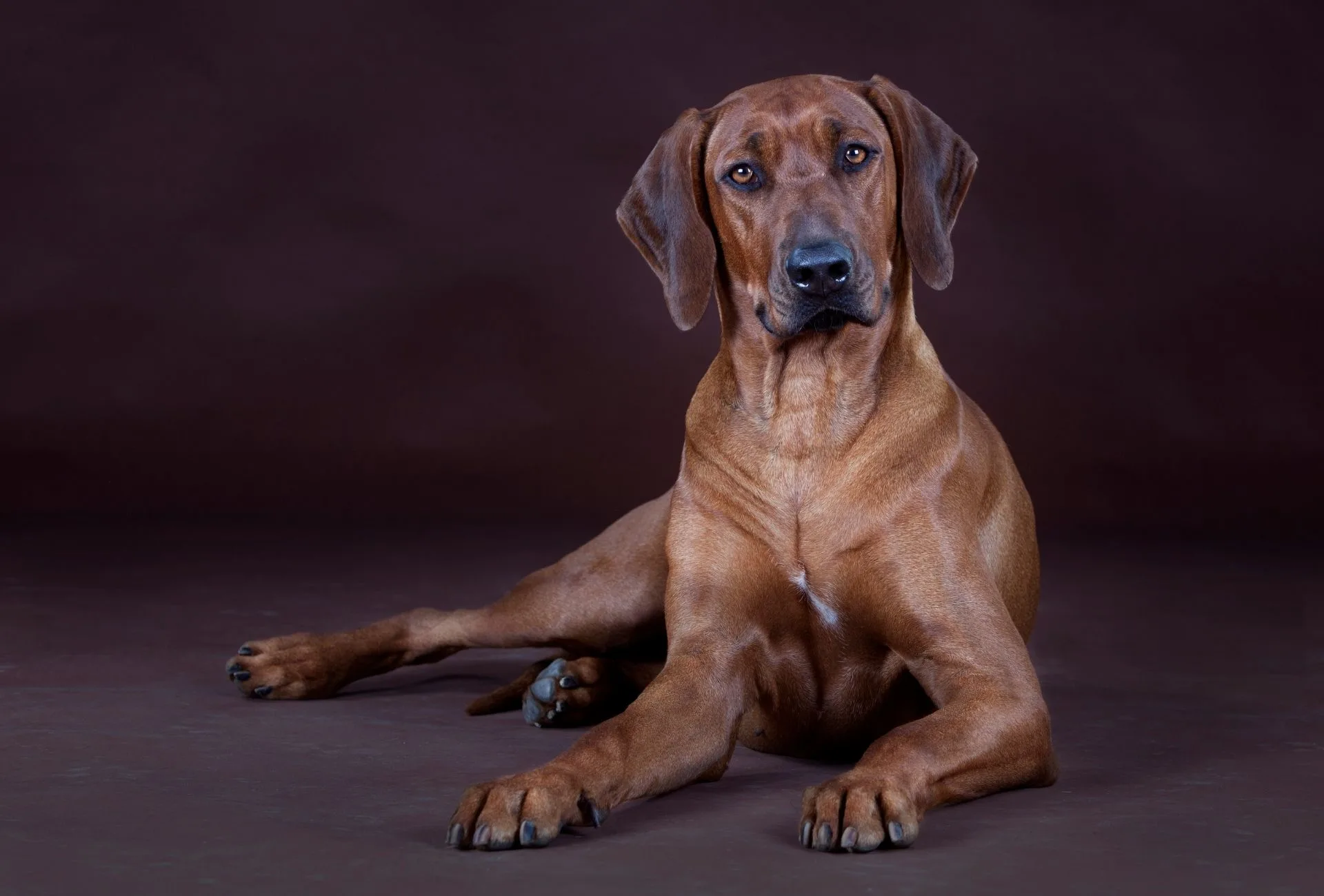
What is the Best Bear Hunting Dog?
The best bear hunting dog is probably the Karelian Bear Dog with Hounds coming in a close second.
What the best bear hunting dog breed is also dependent upon the climate and geography in general.
In colder climates, the Siberian Laika was commonly used for hunting and/or baying bears while Hounds are more suitable and widely available in the USA.
In theory, many other dog breeds such as large game hunters or pointers could be trained to do parts of working bear but they’re not bred specifically for this purpose.
They are bred for a variety of work though and technically could be used for working bears in a non-lethal way.
Are Karelian Bear Dogs Rare?
Karelian Bear Dogs are rare as household pets in the US while they are consistently among the top 10 in their home country Finland5.
In Finland, there are over 1000 Finnish Hounds (i.e. Karelian Bear Dogs) registered each year which puts them at spot number 7 for the most popular breeds in 2019 and 20206.
At least 700 KBDs were registered in Finland for over a decade now.
That being said, there were 50,000 registrations in total so that puts the KBD only at about 2% of the total registrations.
As of July 2023, the database has not been updated with current registration numbers.
Everywhere else in the world, it’s safe to say that the KBD is pretty rare except for countries with increasing bear populations (even then, it’s not guaranteed).
Besides North America – where hunting is regulated by each state – and Northern Europe where the KBD is used for elks, Asia and Russia come to mind but there have been no reports of the KBD being common there.
The fact of the matter is that bear dogs may save lives. Look no further than what they did in Washington.7
Sources
- Humane Society: Facts about bear hounding (…) ↩︎
- ResearchGate, 2019: Behavioral and Physiological Responses of Scandinavian Brown Bears (Ursus arctos) to Dog Hunts (…) ↩︎
- Phys.org, 2019: Weak Arctic ice sees 56 polar bears descend on Russian village ↩︎
- Beardogs.org: KBD history ↩︎
- Finnish Kennel Club: Karelian Bear Dog ↩︎
- Finnish Kennel Club, 2020: KBD registration numbers ↩︎
- Spokesman-Review (Washington newspaper), 2019: Washington’s first Karelian Bear Dogs, credited with busting poachers and saving kittens, die ↩︎
